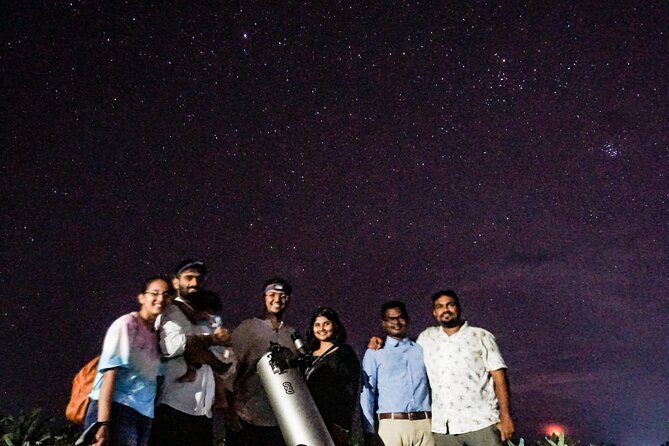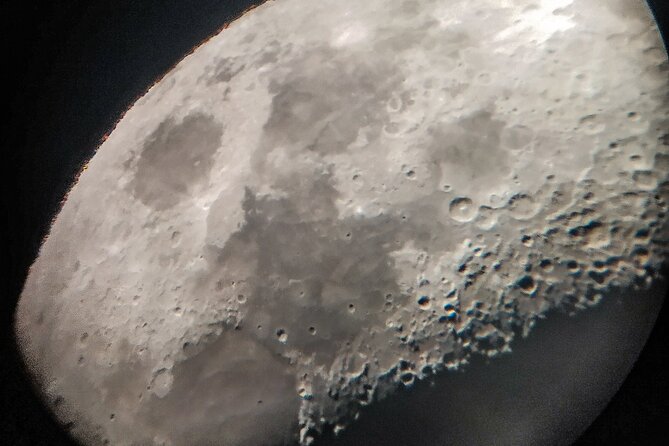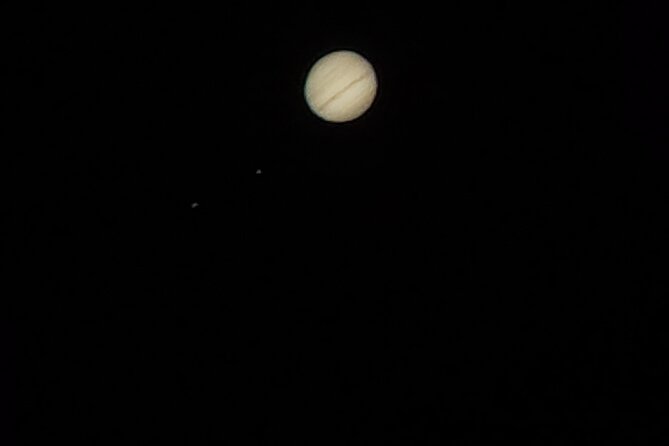Exploring the Skies With Newtonian Telescope
Gaze beyond the earthly confines and peer into the depths of the cosmos with the Newtonian Telescope. Its sleek design and precision optics open a portal to the mysteries of the universe, allowing enthusiasts to witness celestial wonders firsthand.
From the dance of distant galaxies to the enigmatic glow of nebulae, the Newtonian Telescope beckons explorers to unravel the secrets hidden within the night sky. A journey awaits those who seek to uncover the beauty and complexity of our celestial neighborhood through the lens of this powerful instrument.
Key Points

- Unmatched clarity for celestial observations
- Easy setup and maintenance for user convenience
- Versatile and cost-effective for all levels of astronomy enthusiasts
- Precision design for detailed views of galaxies and planets
Benefits of Using Newtonian Telescopes

Using a Newtonian telescope offers stargazers unparalleled clarity and precision in observing celestial wonders. The technology advancements in these telescopes have played a crucial role in various astronomical discoveries and scientific research.
By harnessing the power of mirrors and lenses, Newtonian telescopes can capture intricate details of distant galaxies, nebulae, and planets with remarkable accuracy.
Beyond scientific research, these telescopes also serve as valuable tools for educational outreach, allowing enthusiasts to explore the cosmos firsthand and inspiring a new generation of astronomers.
The ease of use and affordability of Newtonian telescopes further enhance their appeal, making them a popular choice among both amateur stargazers and seasoned professionals looking to delve deeper into the mysteries of the universe.
Features of Newtonian Telescope Design

The design of a Newtonian telescope embodies a harmonious combination of innovative engineering and optical precision, enabling observers to explore the depths of the universe with unparalleled clarity and detail. This type of telescope offers several advantages for celestial wonders discovery. Here are some key features of Newtonian telescope design:
| Feature | Description |
|---|---|
| Large Aperture | Allows for greater light-gathering capability, enhancing visibility of faint celestial objects. |
| Parabolic Primary Mirror | Provides sharp, high-contrast images by focusing light to a single point. |
| Easy Collimation | Simplifies the alignment of optical elements, ensuring optimal performance. |
| Minimal Chromatic Aberration | Reduces color distortion, resulting in clearer views of stars and planets. |
Newtonian telescopes stand out for their ability to reveal the mysteries of the universe with remarkable clarity and precision, making them a popular choice among amateur and professional astronomers alike.
Newtonian Telescopes Vs. Other Types

When comparing Newtonian telescopes with other types, one immediately notices the distinctive design features that set them apart in the realm of celestial observation. Newtonian telescopes utilize a concave primary mirror to reflect light to a flat secondary mirror, which directs the light to the eyepiece, offering a simpler and more cost-effective design compared to other telescopes like refractors.
This design allows for larger apertures, enhancing light-gathering capabilities and providing sharper images. In terms of magnification power, Newtonian telescopes excel in observing faint deep-sky objects due to their ability to gather substantial amounts of light.
While other telescopes have their strengths, the Newtonian design remains a popular choice among astronomers for its versatility and performance.
Tips for Observing Celestial Objects
For optimal celestial observation, consider adjusting the telescope’s focal length to achieve clearer images of distant objects.
When gazing at the night sky through a Newtonian telescope, it’s essential to use quality telescope accessories like eyepieces and filters to enhance your viewing experience.
Selecting the right eyepiece can make a significant difference in magnification and clarity when observing celestial objects such as planets, stars, and galaxies.
Plus, utilizing filters can help reduce glare from bright objects or enhance the visibility of specific wavelengths of light.
Setting Up Your Newtonian Telescope
To ensure optimal viewing of celestial objects through your Newtonian telescope, begin by carefully aligning the telescope’s primary mirror with the secondary mirror using a collimation tool.
Here are three essential steps to set up your Newtonian telescope effectively:
-
Telescope Alignment Techniques: Use a collimation tool to align the primary and secondary mirrors correctly for crisp and clear images.
-
Stargazing Accessories: Consider investing in accessories like a sturdy tripod and quality eyepieces to enhance your stargazing experience.
-
Calibrate the Finderscope: Align the finderscope with the main telescope to easily locate and track celestial objects.
Maintenance and Care Guidelines
Regularly maintaining and caring for your Newtonian telescope is essential to ensure optimal performance and longevity. To keep your telescope in top condition, follow these maintenance and care guidelines:
| Cleaning Techniques | Storage Solutions |
|---|---|
| – Use a soft brush or air blower to remove dust – Clean optics with a microfiber cloth and lens cleaning solution – Handle mirrors with care to avoid scratches |
– Store in a cool, dry place – Cover the telescope when not in use to prevent dust buildup – Consider a protective case for transportation |
Plus, here are some troubleshooting tips and repair options to address any issues that may arise with your Newtonian telescope. By following these guidelines, you can ensure your telescope remains in excellent condition for many stargazing sessions to come.
Best Locations for Stargazing

Maintaining your Newtonian telescope to ensure optimal performance also involves choosing the best locations for stargazing. To make the most of your stargazing experience, consider the following:
-
Dark Sky: Seek out locations away from city lights to have clearer views of celestial objects. Dark sky areas provide minimal light pollution, allowing for better visibility of stars, planets, and other astronomical wonders.
-
Astronomy Clubs: Joining local astronomy clubs can lead you to prime stargazing spots recommended by experienced enthusiasts. These clubs often host stargazing events in ideal locations, providing a community of fellow stargazers to share knowledge and experiences with.
-
National Parks: National parks with designated stargazing areas offer breathtaking views of the night sky, free from urban light interference. Consider visiting these parks for an unforgettable stargazing adventure under pristine skies.
Capturing Astrophotography With Newtonian Telescopes
Optimize your astrophotography skills with Newtonian telescopes for capturing stunning celestial images. When delving into night photography, these telescopes offer a unique advantage with their superior light-gathering capabilities.
To enhance your astrophotography experience, consider investing in telescope accessories such as camera adapters, equatorial mounts for precise tracking, and filters to reduce light pollution. Newtonian telescopes provide excellent image quality and are well-suited for capturing deep-sky objects like galaxies and nebulae.
Mounting a DSLR camera onto the telescope can yield breathtaking images of the night sky. Experiment with different exposure settings and composition techniques to create captivating astronomical photos that showcase the beauty of the universe.
Common questions
Can a Newtonian Telescope Be Used During the Day for Terrestrial Viewing?
During the day, a Newtonian telescope can be used for terrestrial viewing. Its design allows for clear daytime observation, providing decent image quality. Users may enjoy exploring landscapes, wildlife, and other distant objects with this telescope.
What Is the Recommended Age Range for Using a Newtonian Telescope?
For using a Newtonian telescope, the suitable age range depends on individual interest and ability. While supervision is recommended for younger users due to the learning curve, older teens and adults can navigate the equipment with ease.
How Often Should the Mirrors of a Newtonian Telescope Be Collimated?
When caring for a Newtonian telescope, it’s crucial to align its mirrors through collimation. In optimal conditions, experts recommend checking and adjusting mirror alignment every few observing sessions. Regular maintenance like this ensures clear views of celestial wonders.
Are There Specific Accessories Needed to Attach a Camera to a Newtonian Telescope for Astrophotography?
When attaching a camera for astrophotography with a Newtonian telescope, specific accessories are crucial. Camera compatibility is key for optimal results. Seek adapters and mounts designed for this purpose to enhance your stargazing experience.
Can a Newtonian Telescope Be Used for Viewing Planets in Our Solar System as Well as Deep-Sky Objects?
Yes, a Newtonian telescope can be used to view planets in our solar system and deep-sky objects. It depends on viewing conditions and magnification capabilities. Regular maintenance and proper cleaning procedures are essential for optimal performance and longevity.
Here's more of our most recent tour reviews happening neaby
Last Words
Set out on a cosmic adventure with the Newtonian Telescope and unlock the mysteries of the universe. From distant galaxies to shimmering stars, this powerful instrument offers a unique window into the celestial realm.
By following the tips for observing celestial objects and setting up your telescope properly, you can experience the beauty and complexity of the night sky like never before.
So grab your Newtonian Telescope and start exploring the wonders of the cosmos today!





